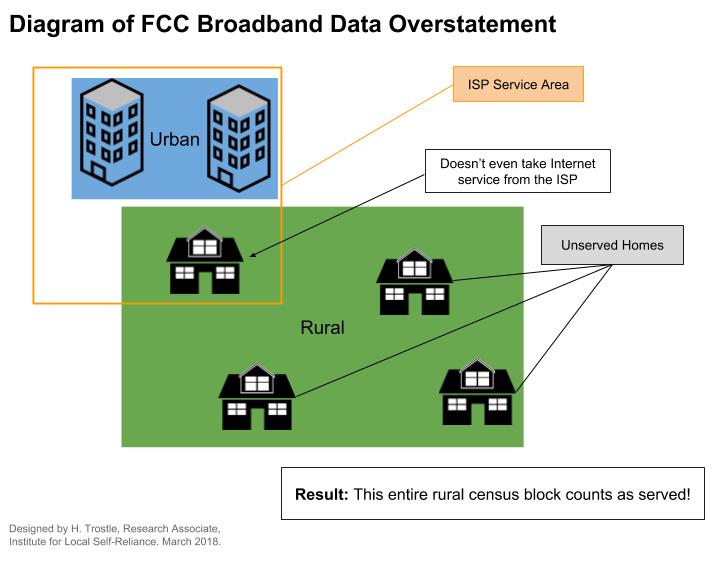
Fast, affordable Internet access for all.
The application window for the Connect America Fund (CAF) II Auction recently closed among debate about eligibility criteria. A recent editorial from the WVNews, where multiple counties were hit hard by flawed FCC data, urged their federal elected officials to act before rural residents lose more funding opportunities.
Wha’ Happened?
As multiple experts have shown, the Form FCC data collection uses an overly broad measurement by relying on census blocks to show areas with broadband service. The FCC has admitted that their methodology overstates who does or does not have FCC defined broadband speeds of 25 Megabits per second (Mbps) download and 3 Mbps upload. This year, seven West Virginia counties that hoped to access CAF II funding have been deemed ineligible because the new FCC Form 477 data indicates that each county has 100 percent broadband access.
Folks in the region are reasonably confused, concerned, and upset. In 2015, the FCC’s data indicated that these same areas were underserved and there have been no deployments to cause such a seismic change.
The editors at the WVNews noted that the chairman of the West Virginia Broadband Enhancement Council described the new FCC determination as “not even close to being correct” and that he had predicted there might be difficulty obtaining CAF II funding.
The president of a local fixed wireless provider offered a useful analogy:
“The problem is, with the Form 477, if one person in that census block gets [broadband], then that whole census block is counted as served…That’s like saying if someone in the U.S. has access to fresh lobster, then they all do. That’s just not really true.”
He also described the dilemma companies like his face because they might want to apply for funding:
“The very data we’re turning in to the FCC that they mandate from a funding standpoint can turn out to be your worst enemy…You turn it in and may say, ‘I shot myself in the foot.’ It’s a complex problem, and I’m sure it’ll have a complex answer.”
Their Own Testing
Last fall, the Broadband Enhancement Council launched their own speed test. Their goal was to share the data with the FCC to help create a more accurate picture of what Internet access is like in West Virginia. Before the data can be useful, however, more people need to take the speed test, especially from the seven counties that the FCC have deemed ineligible for CAF II funding. Those counties are Barbour, Gilmer, Harrison, Lewis, Marion, Randolph and Upshur.
At a meeting in early March, Hinton told the Enhancement Council:
“I know there are inaccuracies with the [FCC report’s] data, and there are also myriad inaccuracies with the speed test data….Somewhere in the middle, we may end up finding some common ground comparing the two, a more reliable assessment of where broadband service is and where it isn’t.”
Bad Stats
In his WVNews editorial, Executive Editor John Miller addresses the issue of the FCC’s unreliable data and reminds us that sloppy approaches have consequences for people living in rural West Virginia and in other places:
Our attempts to increase broadband access in this state seem to always be taking one step forward and two steps back. The latest issue centers on a report from the Federal Communications Commission that shows Harrison, Lewis, Barbour, Marion, Randolph, Upshur and Gilmer counties all have 100 percent broadband access.
This is 100 percent wrong.
…
The FCC uses Census data which, if it shows one person in a Census block having access to broadband service, then everyone else in that block is assumed to be covered as well.
We all know what happens when we assume.
…
[A]t this point, the loss of any funding could apply the brakes to our efforts to get everyone connected.
We strongly urge the West Virginia delegation in Congress to work with the FCC to straighten out this problem because, otherwise, many areas of the state have a lot to lose.

